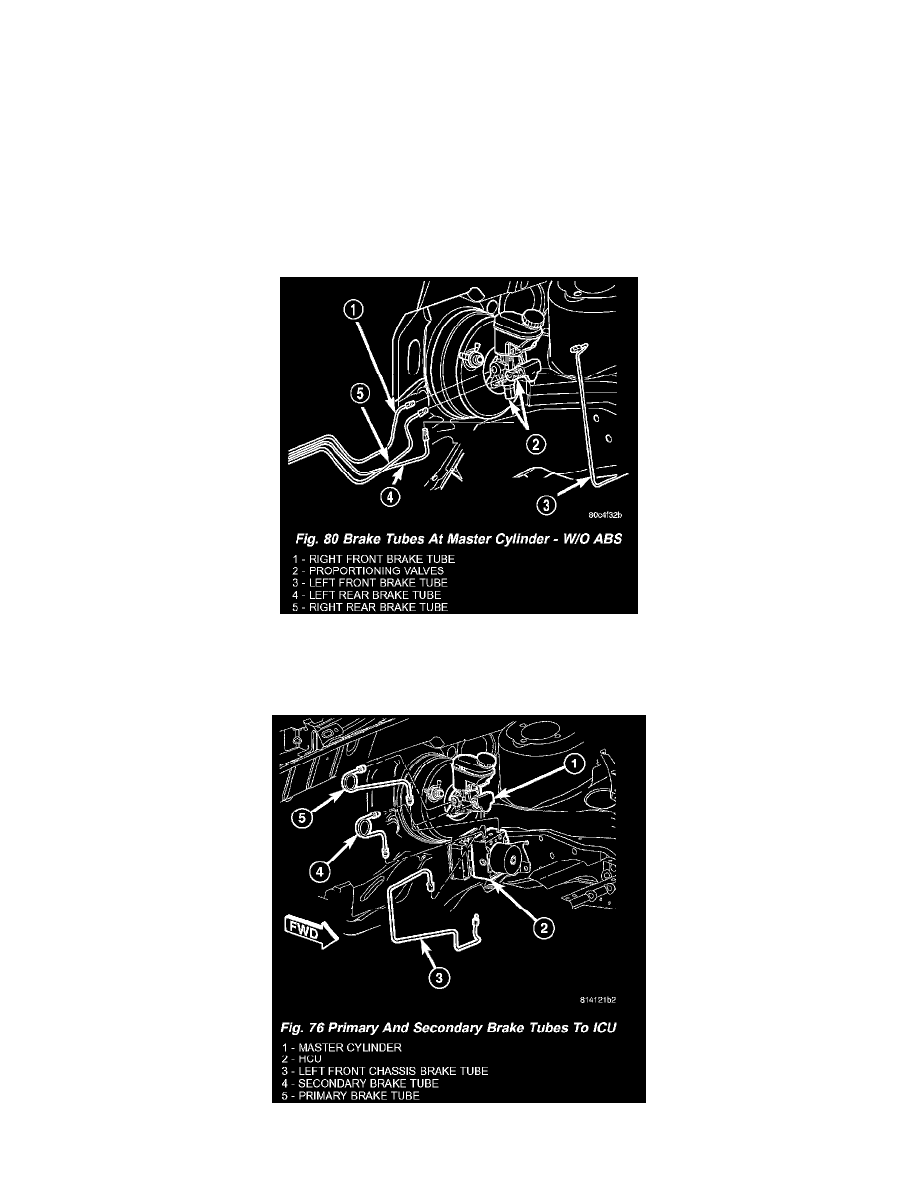PT Cruiser L4-2.4L Turbo VIN 8 (2005)

Brake Master Cylinder: Description and Operation
MASTER CYLINDER
DESCRIPTION
Two different manufacturers are used for this component. Early production PT27 (convertible) use master cylinders supplied by Bosch. Normal
production vehicles (PT27 and PT44) use master cylinders supplied by Continental Teves. The master cylinder brands are not interchangeable.
The individual brands can be easily identified by the shape of the fluid reservoir. Bosch master cylinders use a more rounded reservoir while
Continental Teves master cylinders use a larger, more squared-off look reservoir.
Both brand master cylinders offer two master cylinders depending on whether or not the vehicle is equipped with antilock brakes (ABS). Vehicles
without ABS use a standard compensating-port master cylinder, while vehicles equipped with ABS use a center-valve design master cylinder. The
bore diameter for all applications using a Bosch master cylinder is 23.82 mm (0.937 inch). The bore diameter for all applications using a Continental
Teves master cylinder is 22.2 mm (0.874 inch).
All non-ABS master cylinders are a four-outlet design (one for each wheel brake). There are two ports at each piston. One feeds a front wheel brake
while the other feeds the opposite side rear wheel brake. The rear wheel brake ports are drilled and threaded to accept screw-in proportioning valves
(Fig. 80). One valve is threaded into the bottom of the master cylinder housing at the primary piston and the other is threaded into the right side of the
master cylinder housing at the secondary piston.
All ABS master cylinders are a two-outlet design and the brake tubes from these primary and secondary outlet ports lead directly to the integrated
